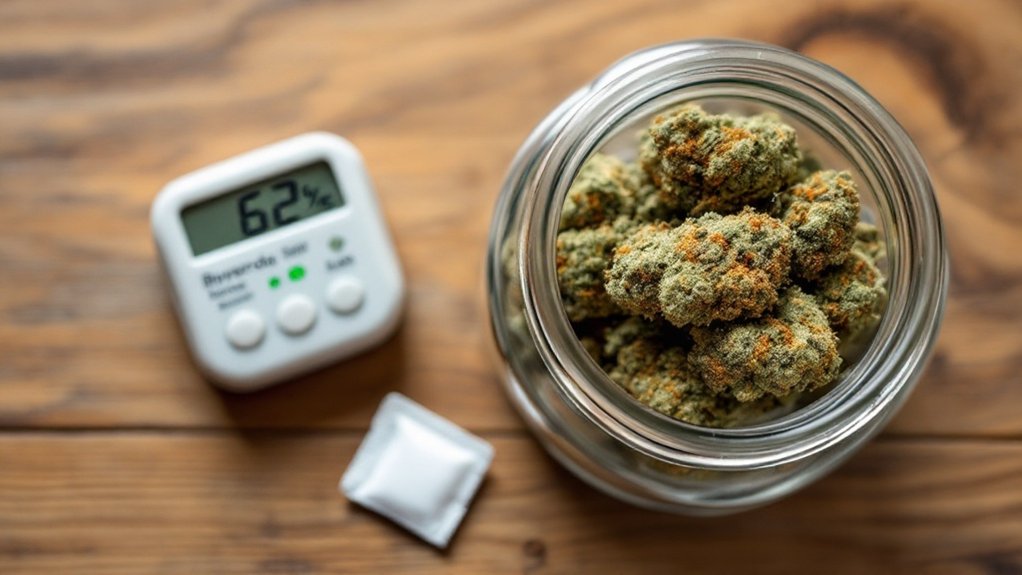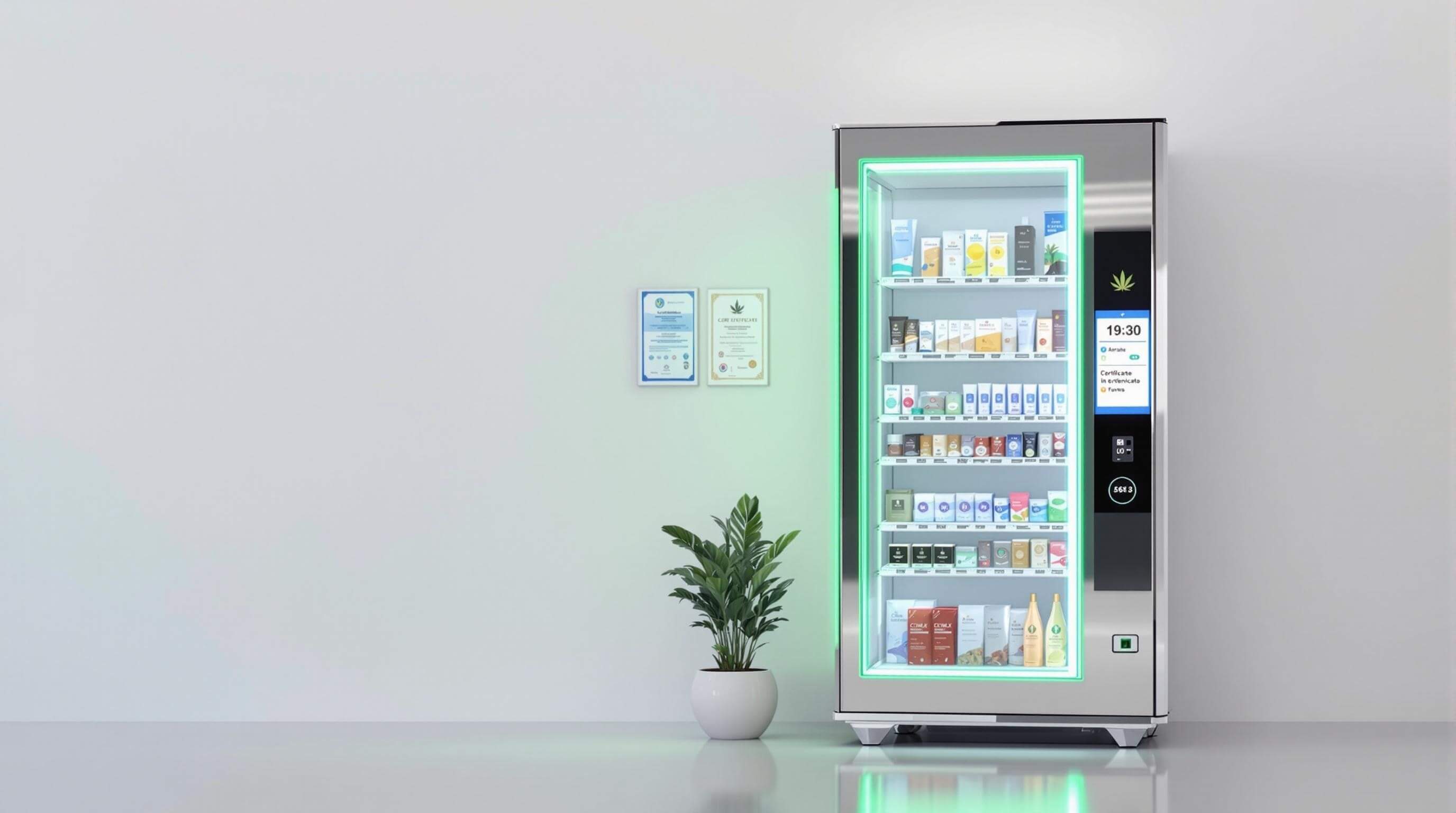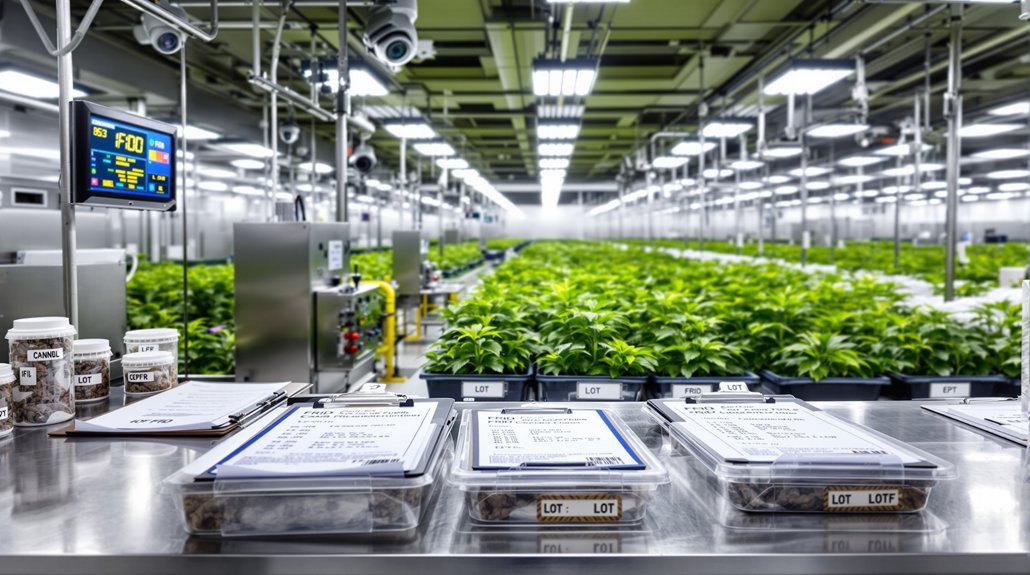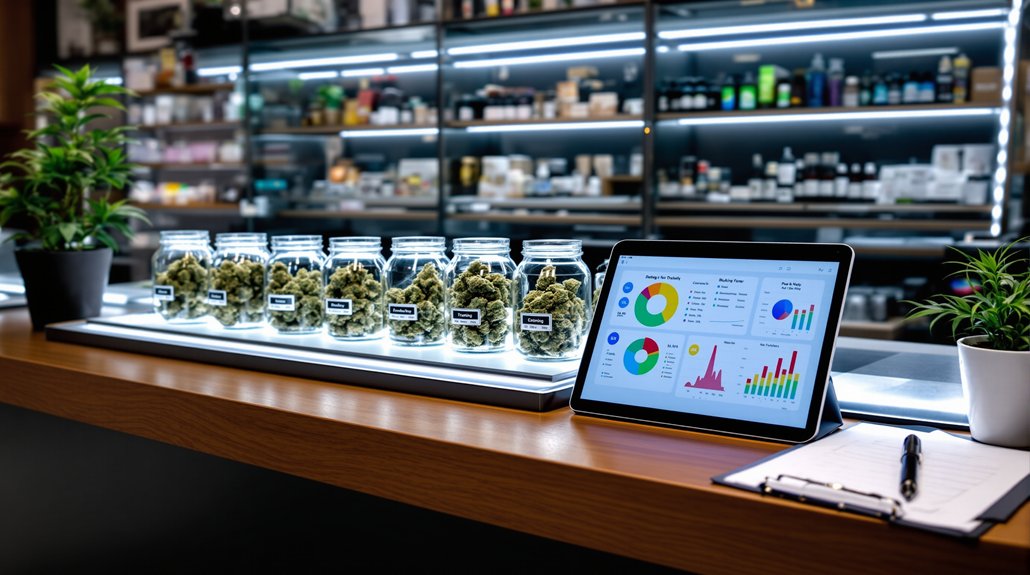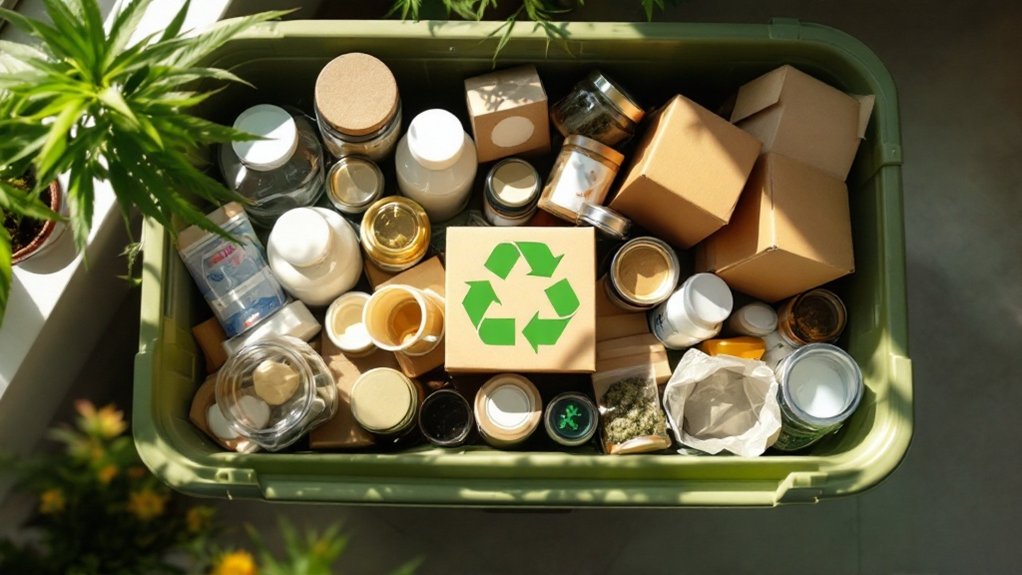The ideal humidity for storing cannabis falls between 55% and 65%, with experts often recommending a narrower range of 59-63% RH. Maintaining proper moisture levels prevents mold growth while preserving cannabinoids and terpenes. Too much humidity promotes dangerous mold development, while excessive dryness causes trichome brittleness and potency loss. Tools like hygrometers and specialized humidity packs (such as Boveda at 62%) offer effective solutions for maintaining optimal conditions. Understanding the temperature-humidity relationship reveals additional factors for long-term preservation.

When it comes to preserving the quality of cannabis, maintaining proper humidity levels stands as one of the most vital factors for storage success. The ideal relative humidity (RH) for cannabis storage typically falls between 55% and 65%, with some experts narrowing this preferred range to between 59% and 63%. This specific range creates the perfect environment for keeping buds fluffy, sticky, and potent while simultaneously preventing the development of mold or excessive dryness.
Cannabis stored at improper humidity levels risks significant degradation in quality and potency. Excessive moisture creates conditions where mold can flourish, potentially rendering the product unusable and harmful. Conversely, when cannabis becomes too dry, it develops a harsh taste and becomes brittle, indicating the breakdown of valuable cannabinoids and terpenes responsible for its effects and flavor profile. Trichome brittleness significantly increases when humidity drops below acceptable levels, causing these resin glands to break off and diminish potency. The delicate balance required explains why proper humidity control extends beyond simple preference to a scientific necessity. Regular monitoring with accurate hygrometers allows enthusiasts to make timely adjustments when humidity levels drift from optimal ranges.
Proper humidity isn’t just preference, it’s the scientific difference between premium cannabis and a degraded product.
Commercial growers and processors typically maintain slightly lower humidity levels between 45% and 55% RH for bulk cannabis storage. This adjustment accommodates the increased mass of plant material and reduces mold risk during long-term storage scenarios. Industry standard products like Boveda humidity packs, calibrated to maintain 62% relative humidity, have become popular solutions for both commercial and personal storage applications.
Temperature and humidity share an interdependent relationship in cannabis preservation. During the significant curing process, many cultivators maintain environments at approximately 64 degrees Fahrenheit with 45-55% humidity to gradually reduce the plant’s moisture content to about 5-10%. Both environmental factors must be controlled simultaneously, as temperature fluctuations can undermine even the most careful humidity management efforts.
The scientific reasoning behind these specific humidity requirements relates directly to cannabis biochemistry. The compounds responsible for cannabis’s distinctive properties—cannabinoids and terpenes—are particularly sensitive to environmental conditions. The 55-65% humidity range provides the best balance for preserving these compounds while preventing moisture-related degradation. This preservation extends not only to potency but also to the aromatic and flavor characteristics that cannabis enthusiasts value.
For home storage, humidity-controlled containers with specialized humidity packs can maintain proper conditions for weeks. These solutions allow cannabis to remain properly preserved without developing the harshness of over-dried product or the dangerous potential for mold growth that comes with excessive moisture.
Frequently Asked Questions
Can I Store Cannabis in Airtight Containers Without Humidity Control?
While cannabis can be stored in airtight containers without humidity control, this method presents significant risks.
Sealed containers trap existing moisture, which can lead to mold growth if humidity exceeds 65% RH.
Conversely, excessively dry conditions cause trichomes to become brittle, accelerating cannabinoid degradation and terpene loss.
For ideal preservation, experts recommend maintaining 58-62% RH using two-way humidity packs in conjunction with airtight, lightproof storage vessels.
Will Freezing Marijuana Prevent Mold Growth?
Freezing marijuana does inhibit mold growth by halting microbial activity at sub-zero temperatures.
However, this method creates significant drawbacks for cannabis quality. The freezing process causes trichomes, the resin glands containing cannabinoids, to become brittle and break off easily, resulting in substantial potency loss.
While effective against mold and pests, frozen storage compromises the structural integrity of the plant material.
Most cannabis experts recommend airtight glass containers stored at temperatures below 77°F with 59-63% relative humidity instead.
How Does Light Exposure Affect Cannabis Storage Humidity?
Light exposure considerably impacts cannabis storage humidity by accelerating moisture evaporation from plant material, creating unstable relative humidity conditions inside containers.
When cannabis is exposed to light, especially direct sunlight, the resulting temperature increase can cause rapid moisture loss, leading to overdrying and brittle buds.
Alternatively, in sealed containers with high initial humidity, light-induced warmth may create condensation, raising local humidity levels and increasing mold risk.
Proper storage requires darkness to maintain stable humidity between 58-62% RH.
Can I Rehydrate Overly Dry Cannabis?
Overly dry cannabis can be effectively rehydrated using several methods.
Placing cannabis in an airtight container with lettuce leaves, bread slices, or damp paper towels provides moisture without greatly altering aroma.
Fruit peels restore humidity while potentially adding subtle flavors to the cannabis.
For quicker results, the hot vapor method utilizes steam from boiling water to rehydrate cannabis in approximately 30-45 minutes.
The key principles involve maintaining an airtight environment, providing a moisture source, and allowing sufficient time for proper rehydration.
How Often Should I Check Humidity Levels in Storage Containers?
Humidity monitoring frequency depends on several storage factors.
For containers with humidity control packs, weekly checks are generally sufficient, while those without require monitoring every 2-3 days.
During the first week of storage, daily checks help establish baseline stability.
Seasonal changes and frequent container opening necessitate more regular monitoring.
Digital hygrometers provide precise readings, and calibrating these devices every 3-6 months guarantees measurement accuracy.
Smart sensors offer remote monitoring capabilities with automatic alerts when humidity levels deviate from the ideal 58-62% range.
